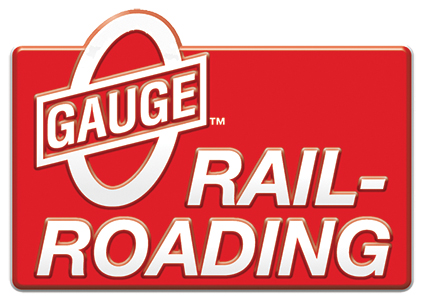Replies sorted oldest to newest
LCL containers?
I would agree, there is a set in Altoona at the museum, next to the signal bridge.
Yep. Lionel made these in the Pre-War Era.
Jon ![]()
Some more information.
NJCJOE posted:Some more information.
Thanks Joe - fascinating insight to days gone buy. I would certainly buy some of these cars and time period appropriate trucks if made.
-Greg
NJCJOE posted:Some more information.
Wow, interesting stuff!!!
Thanks, guys ...... learned something new.
Joe ...... very cool pamphlet. Thanks.
O scale brass models of the PRR FM class flat car fitted out for container service were imported over 20 years ago by Car Works. Interesting prototype and neat model.
Lions! ![]()
That article appeared in 1930. Any idea when these containers were no longer used? I know the PRR was a little slow in fully embracing TOFC, so I wonder if these containers were used through the 40s.
I just saw one of the containers getting unloaded at the 10:56 mark in this video. they show a train of them being loaded.
I found this Topic while searching for O Scale/Gauge PRR FM flat cars with the distinctive stamped steel side sills. I also found what I presume is the model imported by Car Works, as referenced above:
The photograph is located on the "O Scale" page of a website belonging to "Lane's Trains":
http://www.lanestrains.com/O_Scale.htm
Having been unable to find any other example of this stamped side sill style of PRR flat car elsewhere on the web, I'm wondering if anyone knows of such. My purpose is to replicate a Staten Island Rapid Transit service car, number X503, which clearly began life on the Pennsy.
Your help would be greatly appreciated!
Attachments
Maybe this will help?
You would need a good date of the photo if you really wanted to know exactly what is in the containers. The PA Historical museum in Harrisburg has archives full of PRR documents - you may be able to find the billing sheets, accounting entries in journals and such. The car and containers are numbered.
But, as mentioned already, it's whatever the customer wanted transported as LCL rates.
The forefather of Pack-Rat ![]()
Attachments
Rapid Transit Holmes posted:I found this Topic while searching for O Scale/Gauge PRR FM flat cars with the distinctive stamped steel side sills.
Having been unable to find any other example of this stamped side sill style of PRR flat car elsewhere on the web, I'm wondering if anyone knows of such. My purpose is to replicate a Staten Island Rapid Transit service car, number X503, which clearly began life on the Pennsy.
Your help would be greatly appreciated!
Would either of these work? Die cast sprung trucks, easy to remove couplers and removable bulkheads. $20 each plus postage. John in Lansing, ILL rattler21@sbcglobal.net
Attachments
Kelly Anderson posted:Rapid Transit Holmes posted:Having been unable to find any other example of this stamped side sill style of PRR flat car elsewhere on the web, I'm wondering if anyone knows of such.
Here's one, ex PRR #491240 (Kurt Bell). Has some corrosion "issues".
Thank you, this was just what I was looking for - details!
As for the car, not bad for 100+ years of service. Would that I could say the same at 70.
Please forgive the subterfuge. Both you and Kurt, PRR purists, will be dismayed to learn that my object is replication of SIRT X503, an obvious recycling of a wrecked car. However, the X503 soldiered on into the 1950's, "providing yeoman service", under the SIRT banner blue.
Rapid Transit Holmes posted:Kelly Anderson posted:Rapid Transit Holmes posted:Having been unable to find any other example of this stamped side sill style of PRR flat car elsewhere on the web, I'm wondering if anyone knows of such.
Here's one, ex PRR #491240 (Kurt Bell). Has some corrosion "issues".
Thanks for the input. I actually have several of those K-line cars in my parts inventory (pile) and was considering using one! However, being a flatcar snob, I was hoping for a diecast or brass car as the place of beginning. Regardless, I may well use our collective concept before I'm done. O Gauge requires more invention than HO but who could believe that those little featherweights could be classified as "railroad equipment".








